I often hear friends around me complain that they are sedentary at work. After a long time, they begin to suffer from backache and pain.
Some cases are serious, and even the problem of lumbar disc herniation may occur. Standing or sitting is not the case, and the quality of life has dropped sharply.
If you happen to have low back pain in front of the screen, you are worried about whether there is a problem with the lumbar intervertebral disc.
Then try these three actions introduced by orthopaedic doctors to measure whether your lumbar intervertebral disc is good or not.
By the way, this set of movements requires two people to complete. Remember to find a small partner to help you.
Measure your lumbar intervertebral disc with 3 movements
Action 1:

As shown in the figure, lie flat on the bed, straighten your legs, then let the helper gently raise the leg that once hurt and observe the raised angle.
Under normal circumstances, if the lumbar intervertebral disc does not protrude, it is no problem to raise it to 60 ~ 70 degrees and there will be no pain.
If you feel buttock pain, calf pain (more than knee joint), or both kinds of pain before you reach 60 degrees or lift it slightly, it indicates that there may be something wrong with the lumbar intervertebral disc.
Note:
- Keep your back on your back and keep your legs straight. Lift your legs lightly and slowly, and stop when you feel pain. Some people usually lack exercise and their knees are relatively [tight]. Straightening their legs will make them uncomfortable behind their knees. This feeling is not pain.
Action 2:
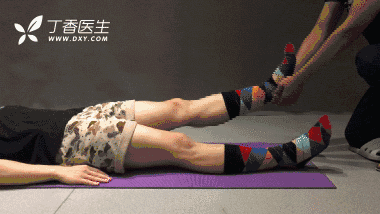
Yes, it’s the same action, but this time it’s the leg that hasn’t hurt.
Under normal circumstances, raising this side of the leg (and waist) will not cause pain.
If you feel pain in the waist and legs on the other side when lifting, it means that the lumbar intervertebral disc may protrude more severely.
The precautions are the same as the previous action.
Action 3:
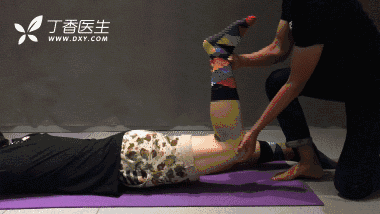
As shown in the figure, lie prone on the bed, lift your lower leg (90 degrees to your thigh), and then ask your helper to raise your thigh.
Under normal circumstances, the thigh will not feel pain when lifted about 10cm from the bed surface.
If you raise it slightly and feel pain in front of your thigh, there may be something wrong with the lumbar intervertebral disc.
Note: Try to relax when doing exercises. If you feel pain, stop immediately.
After these three movements, how is your waist?
If any movement causes you low back pain, buttock pain, posterolateral thigh pain and lateral calf pain, go to see a doctor.
If you can finish these movements smoothly, but because you are sedentary at ordinary times and often suffer from waist discomfort, then the following three movements can help you relieve waist discomfort and practice at home.
3 movements to relieve lumbago
Action 1:
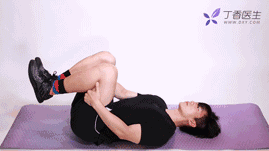
As shown in the figure, lie down with your hands around your thighs and then lean your knees against your chest.
Note: When the knee is close to the chest, the waist will feel relaxed.
Action 2:
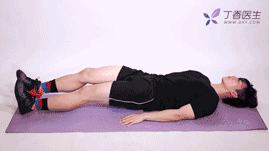
As shown in the figure, lie down, lift one leg, hold it to one side with your hand, hold it for a few seconds, then let it go, and change to the other side after 3-5 times.
Note: If your knee cannot touch the ground, don’t force it to turn around as much as you can. If you feel pain or discomfort, please stop immediately.
Action 3:
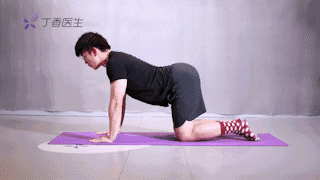
As shown in the figure, kneel on the yoga mat with the knee directly below the hip joint.
Inhale ready, exhale and contract by abdominal strength at the same time, the back will rise, the head and buttocks will be retracted inward, the back will be bowed like a cat, and the breath will be held for 1-2 seconds at the same time.
How about, have you learned? Let’s take a test with our friends.
